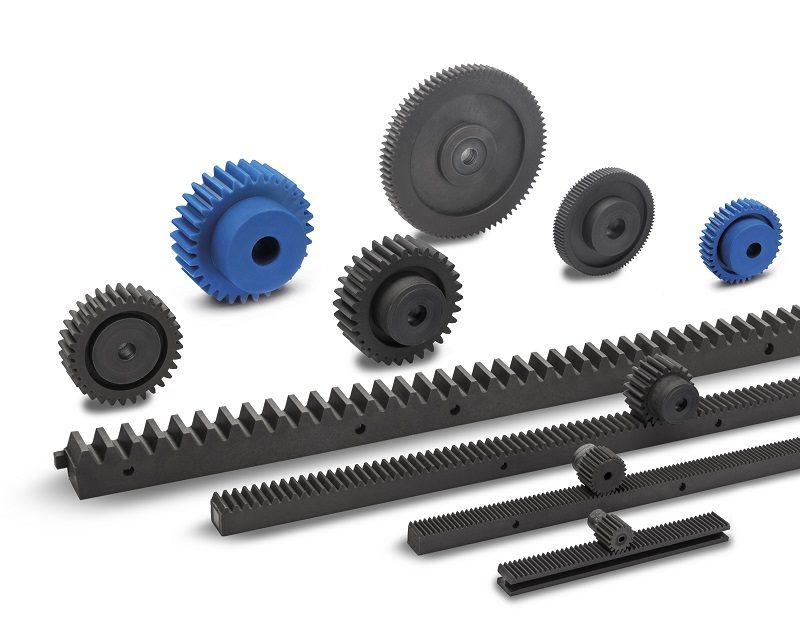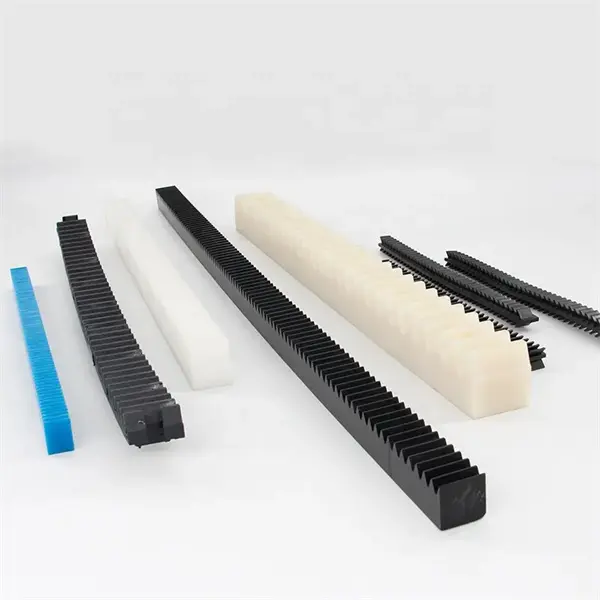Product Description
Product Description
|
Products |
Gear rack |
|||
|
Precision grade |
DIN5, DIN6, DIN7, DIN8, DIN10 |
|||
|
Material |
C45 steel, 304SS, 316SS, 40CrMo, nylon, POM |
|||
|
Heat treatment |
High frequency,Quenching/Carburization, Teeth hardened |
|||
|
Surface treatment |
Zinc-plated,Nickle-plated,Chrome-plated,Black oxide or as you need |
|||
|
Application Machine |
Precision cutting machines. Lathes machine Milling machines Grinders machine Automated mechanical systems Automated warehousing systems. |
|||
|
Produce Machine |
CNC engine lathe CNC milling machine CNC drilling machine CNC grinding machine CNC cutting machines Machining center |
|||
|
Workstyle |
Execution is more preferred than empty talk. |
|||
|
Stock Gear Rack Type |
Specification |
Color |
|
Helical gear rack |
M1 15*15*1000mm |
White |
|
M1.5 19*19*1000mm |
White |
|
|
M2 24*24*1000mm |
White |
|
|
M3 29*29*1000mm |
White |
|
|
M4 39x39x1000mm |
White |
|
|
Spur gear rak |
M1 15*15*1000mm |
Black |
Rack Assembly
To assemble connected racks more smoothly, 2 ends of a standard rack would add half tooth which is convenient for next half tooth of next rack to be connected to a complete tooth. The following drawing shows how 2 racks connect and tooth gauge can control pitch position accurately.
With regards to connection of helical racks, it can be connected accurately by opposite tooth gauge.
1. When connecting racks, we recommend lock bores on the sides of rack first, and lock bores by the sequence of the foundation. With assembling the tooth gauge, pitch position of racks can be assembled accurately and completely.
2. Last, lock the position pins on 2 sides of rack; the assembly is completed.
Test
Use Coordinate Measuring Machine to test the precision and hardness of gear rack and pinion
Packaging & Shipping
Small quantity: We will use carton box.
Big quantity: We will use wooden cases.
Company Profile
ZheJiang Haorongshengye Electrical Equipment Co., Ltd.
1. Was founded in 2008
2. Our Principle:
“Credibility Supremacy, and Customer First”
3. Our Promise:
“High quality products, and Excellent Service”
4. Our Value:
“Being Honesty, Doing the Best, and Long-lasting Development”
5. Our Aim:
“Develop to be a leader in the power transmission parts industry in the world”
|
6.Our services: |
1).Competitive price |
|||
|
2).High quality products |
||||
|
3).OEM service or can customized according to your drawings |
||||
|
4).Reply your inquiry in 24 hours |
||||
|
5).Professional technical team 24 hours online service |
||||
|
6).Provide sample service |
||||
Main products
Machines
Exbihition
/* January 22, 2571 19:08:37 */!function(){function s(e,r){var a,o={};try{e&&e.split(“,”).forEach(function(e,t){e&&(a=e.match(/(.*?):(.*)$/))&&1
| Application: | Machinery |
|---|---|
| Hardness: | Hardened Tooth Surface |
| Gear Position: | Internal Gear |
| Manufacturing Method: | Hobbing |
| Toothed Portion Shape: | Spur Gear |
| Material: | Steel, Nylon |
| Samples: |
US$ 50/Piece
1 Piece(Min.Order) | |
|---|
| Customization: |
Available
| Customized Request |
|---|

What safety considerations should be kept in mind when working with plastic gear racks?
When working with plastic gear racks, several safety considerations should be kept in mind to ensure the well-being of operators, prevent accidents, and maintain the integrity of the equipment. Here’s a detailed explanation of the safety considerations associated with plastic gear racks:
- Proper Installation: Ensure that plastic gear racks are installed correctly and securely according to the manufacturer’s instructions. Improper installation can lead to misalignment, excessive wear, or premature failure, posing safety risks. Follow the recommended torque values and fastening procedures to ensure the gear rack is properly mounted and aligned with other components.
- Load Capacity: Be aware of the load capacity limitations of the plastic gear rack. Exceeding the recommended load capacity can lead to gear failure or unexpected accidents. Consider the anticipated loads and forces in the application and select a gear rack that can safely handle those requirements. If necessary, consult with the manufacturer or an engineer to ensure the gear rack is appropriately sized for the intended application.
- Operating Speed: Take into account the operating speed limitations of the plastic gear rack. High-speed applications can generate significant centrifugal forces and heat, potentially compromising the integrity of the gear rack. Ensure that the selected gear rack is suitable for the intended operating speed range and consider additional measures such as lubrication or cooling if required.
- Maintenance and Inspection: Regularly inspect and maintain plastic gear racks to ensure their continued safe operation. Check for signs of wear, damage, or deformation, including tooth wear, cracks, or excessive backlash. Perform routine lubrication as recommended by the manufacturer. Replace any worn or damaged gear racks promptly to prevent unexpected failures that could lead to accidents or equipment damage.
- Environmental Considerations: Consider the environmental conditions in which the plastic gear rack will operate. Extreme temperatures, excessive humidity, or exposure to corrosive substances can degrade the performance and integrity of the gear rack. Select a plastic material that is suitable for the anticipated environmental conditions and ensure any necessary protective measures are in place to prevent deterioration or failure.
- Operator Training: Provide proper training to operators working with machinery or equipment that incorporates plastic gear racks. Ensure they understand the potential hazards, safety protocols, and procedures for safe operation, maintenance, and inspection of the gear racks. Promote a culture of safety and encourage operators to report any concerns or issues promptly.
It’s essential to adhere to relevant safety standards, regulations, and guidelines specific to the industry and application when working with plastic gear racks. Consulting with experts, such as engineers or safety professionals, can provide valuable insights and help ensure compliance with safety requirements.

How do plastic gear racks handle variations in temperature and humidity?
Plastic gear racks are designed to handle variations in temperature and humidity, offering certain advantages compared to metal gear racks in such conditions. Here’s a detailed explanation of how plastic gear racks handle these variations:
- Temperature Resistance: Plastic gear racks are available in materials that exhibit good temperature resistance. They can withstand a wide range of temperatures, both high and low, without significant deformation or degradation. Different plastic materials have different temperature limits, so it’s important to select a material that suits the intended operating temperature range. For example, engineering plastics like nylon or acetal can maintain their mechanical properties across a wide temperature range, making them suitable for various applications.
- Thermal Expansion: Plastic gear racks have a lower coefficient of thermal expansion compared to metals. This means they expand or contract less with temperature changes. The low thermal expansion coefficient helps minimize dimensional changes and ensures the gear rack retains its shape and tooth profile, maintaining the overall accuracy and performance. It’s important to consider the thermal expansion characteristics of the specific plastic material used in the gear rack design to account for any potential dimensional changes during temperature variations.
- Humidity Resistance: Plastic gear racks are generally resistant to humidity and moisture. Unlike metals, plastic materials do not rust or corrode when exposed to water or high humidity environments. This resistance to moisture makes plastic gear racks suitable for applications where there is a risk of exposure to moisture, such as outdoor equipment or machinery used in humid environments. However, it’s important to consider the specific plastic material’s moisture absorption properties and select a material that has low moisture absorption rates to maintain dimensional stability and prevent any negative effects on performance.
- Sealing and Protective Measures: In applications where plastic gear racks are exposed to extreme temperature or high humidity conditions, additional sealing or protective measures may be necessary. This can include using gaskets, seals, or enclosures to ensure that the gear rack remains protected from direct contact with moisture or temperature fluctuations. Sealing measures can help maintain the gear rack’s performance and extend its lifespan in challenging environmental conditions.
- Material Selection: The choice of plastic material for the gear rack is crucial in determining its ability to handle temperature and humidity variations. Different plastic materials have different properties, including temperature and moisture resistance. It’s important to select a plastic material that is specifically formulated or engineered to withstand the anticipated temperature and humidity conditions in the application. Consulting with material suppliers or manufacturers can provide guidance in selecting the most suitable plastic material for the desired operating conditions.
While plastic gear racks offer advantages in handling temperature and humidity variations, it’s important to assess the specific requirements of the application and select the appropriate plastic material and design considerations accordingly. Regular inspection and maintenance should also be performed to ensure the gear rack’s performance is not compromised by any environmental factors.

How does the choice of plastic material affect the performance of gear racks?
The choice of plastic material significantly impacts the performance of gear racks. Different plastic materials offer distinct properties and characteristics that can affect various aspects of gear rack performance. Here’s a detailed explanation of how the choice of plastic material affects the performance of gear racks:
- Strength and Durability: The selected plastic material determines the strength and durability of the gear rack. Plastics like nylon and polyacetal (POM) are known for their high strength and toughness, enabling gear racks to withstand heavy loads and repetitive motion without deformation or failure. The choice of a suitable plastic with adequate strength is crucial to ensure the gear rack can handle the intended application requirements and operating conditions.
- Wear Resistance: Different plastics exhibit varying levels of wear resistance. Nylon and polyacetal gear racks have excellent wear resistance, making them suitable for applications with high contact forces and frequent sliding motion. The wear resistance of the plastic material affects the longevity and reliability of the gear rack, reducing the need for frequent replacements or maintenance.
- Friction and Lubrication: The choice of plastic material can influence the friction characteristics of the gear rack. Certain plastics, such as nylon, have inherent low friction properties, reducing the power loss and heat generation during operation. Some plastics, like nylon and polyacetal, also exhibit self-lubricating properties, minimizing the need for external lubrication and ensuring smooth and efficient motion.
- Chemical Resistance: Different plastics offer varying levels of chemical resistance. Some plastics, like polyethylene (PE) and polypropylene (PP), have good chemical resistance, making them suitable for environments where exposure to chemicals or solvents is common. The choice of a chemically resistant plastic ensures that the gear rack remains unaffected by corrosive substances, maintaining its structural integrity and performance over time.
- Temperature Resistance: Plastics have different temperature resistance capabilities. High-performance plastics like polycarbonate (PC) and polyphenylene sulfide (PPS) offer excellent heat resistance, making them suitable for applications where elevated temperatures are present. Choosing a plastic material that can withstand the anticipated temperature range ensures that the gear rack maintains its dimensional stability and mechanical properties under varying thermal conditions.
- Weight and Inertia: The choice of plastic material affects the weight and inertia of the gear rack. Plastics like nylon and polyacetal have low density, resulting in lightweight gear racks. Reduced weight minimizes the inertia and allows for faster acceleration, deceleration, and overall improved dynamic performance. Lighter gear racks also contribute to energy efficiency and ease of handling during installation or maintenance.
- Noise and Vibration: The selection of plastic material can influence the noise and vibration levels of the gear rack during operation. Certain plastics, such as nylon, have inherent damping properties that help reduce noise and vibration. By choosing a plastic material with good vibration absorption characteristics, gear racks can operate more quietly, minimizing disturbances and improving user comfort.
It’s important to consider the specific requirements of the application and the intended operating conditions when selecting the plastic material for gear racks. Understanding the performance implications of different plastic materials allows for the optimal choice that aligns with the desired functionality, durability, and overall performance of the gear rack.


editor by Dream 2024-05-08